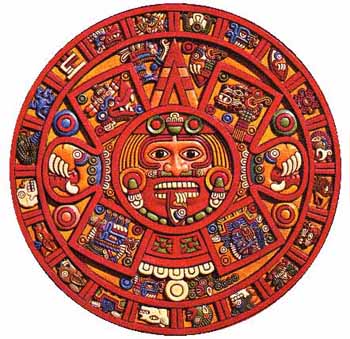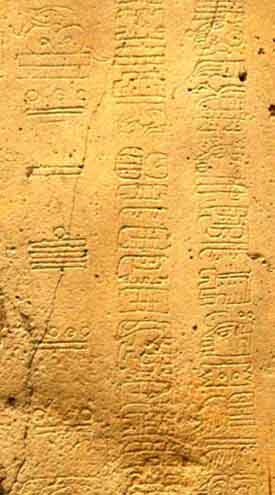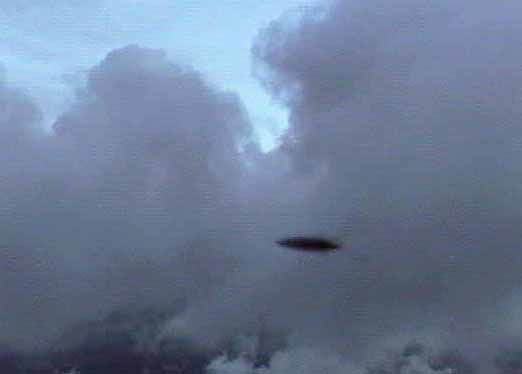
Most ancient civilizations found a way of marking time to predict changes that would affect their survival and destinies. These 'calendars' were often linked with one or more gods, who at some point in their progression, would return. Today, as human consciousness evolves in the age of healing, awareness, technology and reasoning, our attention is riveted to one calendar in particular, the Mayan Long Calendar, as something within its end time date, resonates for many souls. The date is December 21, 2012 (13.0.0.0.0 in the Long Count) as projected by Jose Arguelles and others. I have been taught that 13=4=closure or the end of linear time.
Reality is a holographic construct create by the patterns of sacred geometry that repeat in cycles called linear time. Reality is myth, math, and metaphor. The movement of all consciousness follows a sequence called the golden spiral - the Fibonacci numbers published in 1202.
There have been many calendars throughout history that do not necessarily correlate to our Gregorian calendar or the Mayan calendars. Therefore, how can one be sure that this date is the beginning of what some call a Golden Age? The term 'gold' takes us to alchemy now understood as a metaphor for the evolution of consciousness in the alchemy of time. It is something you feel within your soul, something that follows your life with synchronistic reminders that all is connected as consciousness moves through the gears, or wheels of time to evolve into something beyond the physical experience/experiment.
Did the ancient Mayans know something that we don't? Are we meant to find and understand something as the date, December 21, 2012, comes closer? Look within your soul to determine a greater meaning. We are evolving, learning, and not by accident, putting the pieces of the puzzle together, as guided by the grids through which our consciousness experiences as our souls return 'home'.
There were 3 Mayan Calendars: Haab', Tzolk'in and Long.
The Mayan Long Calendar speaks of the end of one cycle of time moving into the next on December 21, 2012.

The Mesoamerican Long Count calendar is a non-repeating, vigesimal (base-20) calendar used by several Mesoamerican cultures, most notably the Maya. For this reason, it is sometimes known as the Maya (or Mayan) Long Count calendar. Using a modified vigesimal tally, the Long Count calendar identifies a day by counting the number of days passed since August 11, 3114 BC (Gregorian). Because the Long Count calendar is non-repeating, it was widely used on monuments.
Among other calendars devised in pre-Hispanic Mesoamerica, two of the most widely used were the 365-day solar calendar (Haab' in Mayan) and the 260-day ceremonial calendar, which had 20 periods of 13 days. This 260-day calendar was known as the Tzolk'in to the Maya and tonalpohualli to the Aztecs.

Tzolk'in (Round)
The Haab' and the Tzolk'in calendars identified and named the days, but not the years. The combination of a Haab' date and a Tzolk'in date was enough to identify a specific date to most people's satisfaction, as such a combination did not occur again for another 52 years, above general life expectancy.
The Tzolk'in, the most fundamental and widely-attested of all the Maya calendars, was based in the 26,000-year cycle of the Pleiades, and was a pre-eminent component in the society and rituals of the ancient Maya. The tzolk'in calendar remains in use amongst several Maya communities in the Guatemalan highlands. Its use is marginal but spreading in this region, although opposition from Evangelical Christian converts has erased it from some communities.
The word, meaning "count of days", was coined based on Yukatek Maya. The corresponding words in the K'iche' and Kaqchikel cultures of Guatemala, which have maintained an unbroken train of observance for over 500 years, are, respectively, Ajilabal q'ij and Cholq'ij. The actual names of this calendar as used by the pre-Columbian Maya are not known. The corresponding Postclassic Aztec calendar, probably based on extinct central Mexican observance, was called by them tonalpohualli, in the Nahuatl language.
The Maya used several cycles of days, of which the two most important were the Tzolk'in, or Sacred Round of 260 days and the approximate solar year of 365 days or Haab. The Sacred Round combined the repeating cycle of numbers 1-13 with 20 day names ... so that any particular combination would recur in 13 x 20 or 260 days; the day name and the number changed together: 1 Imix, 2 Ik, 3 Akbal ... as we might say Monday 1, Tuesday 2, Wednesday 3, and so on.
Because the two calendars were based on 365 days and 260 days respectively, the whole cycle would repeat itself every 52 Haab' years exactly. This period was known as a Calendar Round.
To measure dates over periods longer than 52 years, the Mesoamericans devised the Long Count calendar.
The Long Count calendar identifies a date by counting the number of days from August 11, 3114 BC. Rather than using a base-10 scheme, like Western numbering, the Long Count days were tallied in a base-20 scheme. Thus 0.0.0.1.5 is equal to 25, and 0.0.0.2.0 is equal to 40.
The Long Count is not consistently base-20, however, since the second digit (from the right) only counts to 18 before resetting to zero. Thus 0.0.1.0.0 does not represent 400 days, but rather only 360 days.
Continued Wikipedia
Mayan Calendar Corroborates Hindu Prophecy About.com
Maya Calendar Round About.com




IMIX
ee mesh
waterlily, world IK'
eek'
windAK'BAL
ok bol
night-houseK'AN
k' on
maize 



CHIKCHAN
cheek chon
snake KIMI
kee me
deathMANIK'
ma neek'
handLAMAT
la mot
Venus 



MULUK'
mul ok'
waterOK
ak
dog CHUEN
chew in
monkey EB
eb
tooth 



BEN
ben
reedIX
eesh
jaguarMEN
men
eagleKIB
keeb
soul 



KABAN
kah bon
earth ETZ'NAB
ehts' nob
flint, knifeKAWAK
kah wok
stormAHAW
ah how
Lord
Jose Arguelles gained notoriety for his role in the Harmonic Convergence on August 17, 1987 and his mystical book about the Maya calendar, The Mayan Factor: Path Beyond Technology. Born of Mexican-American descent, the Mayan calendar became a childhood passion for him in the 1950s during the decade in which astronomers began to realize that Native Americans practiced a sophisticated astronomy. After more than 30 years of research, he is known as one of the world's foremost authorities of the Mayan calendar.
The overwhelming evidence of Mayan prophecy in the last decade of the millennia supports the accuracy of the calendar and the Arguelles' interpretation of the Dreamspell and Time Shift of July 26, 1992. After perceiving the final sequencing of the Mayan calendar in 1987, the Time Shift in 1992 was an adjustment of the annual calendar's beginning to July 26, so that the Dreamspell New Year falls on that date each year.
Since the Maya codices were destroyed during the European Conquest, the tables of dates and interpretations of codes were mostly destroyed. During the 500 years since the Conquest, Mayan tribes have adopted various new year dates and interpretations. In 1992, the University of Guatemala identified the July 26 date based on an eclipse of July 11, 1991 and the Dresden Codex. Arguelles interpreted that date as the new beginning of the solar year.
In 755 AD, Mayan Priests prophesied that the total solar eclipse of July 11, 1991 would herald two life altering events for humankind - Cosmic Awareness and Earth Changes. Shortly after 1:00 PM, on July 11, 1991, the prophecy seemingly began to unfold.

Mount Popocatepetl and the UFO's
Beneath the eclipse that the Maya had labeled 'The Sixth Sun', a silvery disc shaped object hovered silently above Mexico City. 17 people, unknown to each other, in different locations of Mexico City, videotaped the UFO. This sighting became the earliest most documented mass sightings in history. For months, teams of international researchers from the U.S., Mexico, and Japan followed a wave of UFO activity that connected with the volcano, Mount Popocatepetl. Sightings still continue.
Based on the July, 1991 eclipse, Jose identified the July 26, 1992, Time Shift. Using a day-by-day count, Euro-American astronomers could finally synchronize their calendars with the Maya Priests. The visitors from the sky that Jose called the Galactic Maya in The Mayan Factor, had perhaps made good on their promise to return on that date.
These are all just theories.




0 comments:
Post a Comment